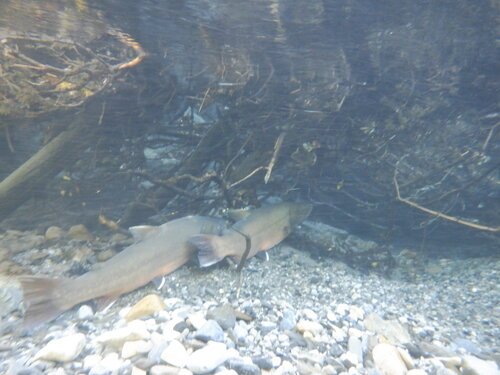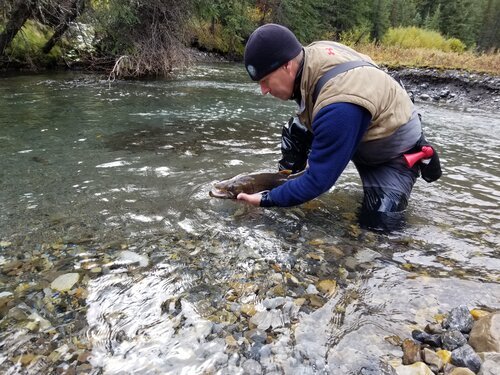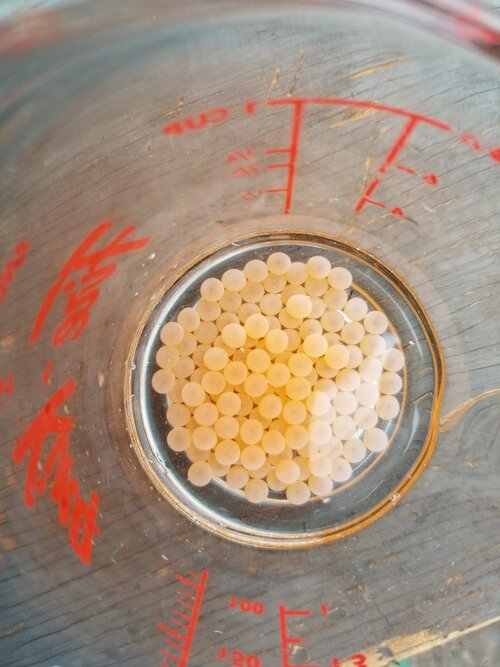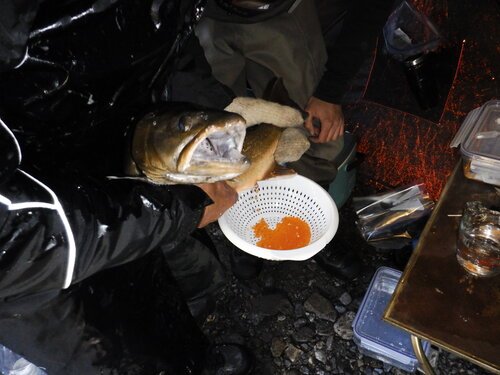Bull Trout Conservation - 'Tis the Season for Some Fish Squeeze'n!
‘Tis the Season for Some Fish Squeeze’n!
For fisheries biologists, the month of September is an exciting one, as it marks the spawning season for many of Alberta’s Bull Trout populations. As the leaves begin to turn, Bull Trout spawning migrations get underway along the province’s Eastern Slopes. Egg deposition and fertilization occurs in a gravel feature (called a ‘Redd’) constructed by a spawning pair of fish, and egg incubation then spans the late fall and winter months.
The Bull Trout is Alberta’s provincial fish, and it is becoming a rare breed. Populations in our province are either considered as “Threatened” or of “Special Concern” according to the Government of Canada’s Species At Risk Act. Habitat fragmentation, habitat loss or alteration, competition and/or hybridization and climate change are among many influences that are threatening Alberta’s remaining Bull Trout populations.
Federal recovery strategies are being developed for the at-risk species, with planning documents expected to be finalized and released soon. In the interim, Areas of Critical Habitat for the species have been identified and some preventative/restorative mitigations (e.g., habitat restoration) and investigative programs (physiological experiments) have been initiated to gain momentum for Bull Trout conservation efforts.
AJM is thrilled to be part of the Bull Trout (BLTR) conservation movement, having recently provided its fisheries expertise to the cause. In spring 2021, AJM was engaged by the Ontario and Prairies/Arctic Region of the Department of Fisheries and Oceans (DFO) to support a research project led by DFO’s Freshwater Institute in Winnipeg, Manitoba. AJM supported project planning through the summer, and in fall 2021, AJM Fisheries Biologists collaborated with DFO Research Biologists in the collection of gametes (egg and milt) from a spawning population of Bull Trout in southern Alberta.
AJM Biologists were asked to lead in the safe and effective capture (and eventual release) of adult fish, as well as the collection and in-situ fertilization of Bull Trout eggs and milt. Once the gametes were collected from adult Bull Trout (with no harm to the donors), the eggs and milt were prepared for immediate air transport to incubation and rearing facilities in Winnipeg. After hatching, juvenile Bull Trout will be reared by DFO Research Biologists and tested for temperature tolerances. Resulting information will be important to help understand the potential threat of rising water temperatures on Alberta’s Bull Trout populations.
“AJM is proud to have been approached by DFO to support this important work.”
We are also very appreciative of the support from many volunteers (Trout Unlimited Canada, Bull Trout enthusiasts and AJM staff), who helped through redd surveys to confirm the timing of spawning for our target population. If you’d like to learn more about Bull Trout conservation efforts or this Project in particular, please feel free to drop us a line. One of our Fisheries Biologists will be happy to share our fish story!
What are we doing?
One of the biggest challenges of managing snake populations is monitoring them. Snakes are active only during the summer season and can disperse up to 25-30km away from their winter den sites (hibernacula). This makes it extremely difficult to monitor snakes and find out how they are interacting with their environment. However, snakes are homebodies, they return year-after-year to the same den sites. Using this aspect of their ecology, AJM has implemented a research project monitoring snake populations for three hibernacula in southern Alberta. We have taken a dynamic approach to quantifying the number of snakes at each hibernaculum through active capture and marking, and using autonomous antennas units to scan and record snakes all year round.
Starting in 2019, during the spring and fall, AJM performs daily sampling visits to all three sites and actively captures all snakes encountered. Once snakes are captured, we work them up collecting data on their length, weight, sex, and physical health. Before returning them to their den site we implant a small (6 mm) radio frequency tag under their skin. This tag allows us to individually identify each snake and collect multiple years of data. Moreover, these tags are picked up by the antennas that we have set up around the den entrances allowing us to know when, at what time, and how often each snake accesses the sites. To date, we’ve tagged over 1,000 snakes! The data collected allows us to perform analyses to generate population estimates of snakes at each site, determine changes in population among sampling years, report on overall population demographics and health of the snake populations we are monitoring. All of this data supports and improves the base of knowledge for snakes in Alberta and supports local wildlife managers in their work to preserve our native snake species.
Education is key:
Like we mentioned above, snakes can create strong responses from people. Sometimes those responses can be negative or driven by a lack of information. As part of our snake project, AJM also initiated Team Danger Snake to engage people to learn more about snakes around the study sites and increase positive interaction between people and snakes. We also offered snake information sessions to share knowledge about snake species, their ecology, and how to interact safely with snakes. The program has been successful and resulted in over 50 snakes rescued and removed from roads and access trails where they are at risk.
AJM has a diverse team, including expertise not only in wildlife monitoring but also research-based projects such as this. If you have any questions about what AJM’s Team Danger Snake can do for you, please contact us at info@ajmenv.com







